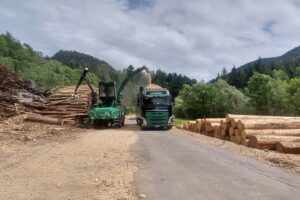After last year’s disaster with cryptocurrency companies suddenly going bankrupt, investors lost confidence. How to recover it? For some providers, Proof of Reserve may be the answer.
Over the past few months we have witnessed incredible disasters, with billionaire crypto providers collapsing in a matter of days.
We could cite TerraUSD, but even these days we have witnessed others such as the famous FTX collapse, filled with scandals and criticism of its CEO Sam Bankman-Fried.
In an environment like the financial one, where trust is never enough, we often find ourselves in the grip of scandals that see clients deprived of their savings or the simple possibility of withdrawing money from their accounts or wallets.
This situation had to change, so we see the adoption of the so-called ‘Proof of Reserve’.
According to the providers who use it, this can make a difference and, although not without some flaws, it allows for a higher degree of reliability. Necessary as never before in Web3!
Let’s find out what it is and how it can make a difference.
Table of Contents
What is Proof of Reserve?
Many will remember Proof of Work and Proof of Staking, but no, this is not the right comparison.
The cases are different, whereas PoW and PoS validate cryptocurrencies, Proof of Reserve is a real test, a check, to ensure that funds at a crypto exchange actually exist.
Specifically, the PoR must prove that the platform’s funds correspond to its customers’ deposits.
This verification works through an independent, third-party audit (economic analysis to establish the correctness of the balance sheet data).
User trust: why is Proof of Reserve important
In the cryptocurrency market, there has often been talk of the difficulty of finding trustworthy providers.
Today, all the scandals in the crypto sector have caused investor confidence to wane more and more.
The latest Web3 earthquakes have only made the situation worse!
Proof of Reserve is a solution that can restore some of the lost trust by providing a more transparent environment and more trustworthy crypto providers.
Cryptocurrency platforms such as Coinbase, Binance and Kraken have championed this system.
The ultimate goal is to use this system to track and observe how one’s money is managed by the platform and whether it operates abnormally with the capital of users.
How does Proof of Reserve work?
Typically, a cryptocurrency exchange has a hot wallet, that holds the money used for user withdrawals, and another cold wallet where some of this money is kept safe.
In general, there is a constant movement of money between the platform’s hot wallet and cold wallet, depending on deposits or withdrawals.
Some of these transfers can be tracked if you have some details in reference to them, however, you would have a bland view of them.
The Proof of Reserve audit, on the other hand, allows for a more in-depth, all-encompassing search of all assets held by the company through the so-called Merkle Tree.
This is precisely what PoR audits are based on, but it may sound complex, so we will try to make it more understandable.
What does ‘Merkle Tree’ mean?
It is one of the most popular schemes for managing large and complex blocks of data.
The Merkle Tree is a data management system also exploited in blockchain, with which data are verified individually, simplifying access to each one.
This method is based on branches in which each block of data is stored according to its own hash and not as a result of a long chain of data.
In this way, it is possible to analyse individual pieces of information of an entire block of data knowing only the hash, a unique identifier. Rather than the entire branch of data.
In practice, we can access detailed information immediately, without the need to analyse each individual block of data. Like the balance sheets of cryptocurrency exchanges for example!
How does a PoR audit work?
This is how third parties are called in to audit the funds of the platforms where investors deposit their money.
Basically, an external auditor takes care of recording the incoming and outgoing balance sheet data of the company in question. Which will then be randomly verified later on to ascertain its veracity.
How? Simple, with the unique signatures used by the auditee.
These match to the individual entries recorded within the Merkle Tree, having to match for each individual transaction.
Each time, however, the balance of the reserve changes, another Merkle Tree need to be created to keep an eye over time on the trades, active and passive. In fact, this analysis is only valid in relation to a precise moment in time!
Cryptocurrency exchanges: transparency needed
We need a more accurate solution, that’s for sure. We cannot, however, deny that Proof of Reserve succeeds in at least partially mitigating the transparency problem now experienced within the market.
Needless to deny that there will have to be improvements over time. But it already looks like something to bode well for investors!
Everyone is tired of loosing their funds for valuation errors or outright scandals. Transparency will therefore increasingly be a necessity for all cryptocurrency providers who want to reassure their investors. Proof of Reserve is only a start.
Read also: Cryptocurrencies collapse: 5 lessons for every Web3 investor today












